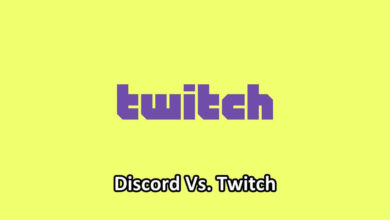The Ultimate Comparison of Linux Mint Vs Ubuntu (With Table)
Are you tired of using the same old operating system and looking for a change? Look no further than Linux Mint and Ubuntu, two popular Linux distributions that offer unique features and benefits. But which one is right for you? In this ultimate comparison, we’ll dive deep into the differences between these two powerhouses to help you make an informed decision. Get ready to explore everything from user interface design to performance metrics so you can choose the best option for your needs!
Linux Mint Vs Ubuntu (Comparison Table)
| Linux Mint | Ubuntu |
|---|---|
| Linux Mint is a free Linux-based operating system based on Ubuntu that aims to be user-friendly and easy to use. | Ubuntu is a free open source and Linux operating system based on Debian GNU/Linux and was first released in 2004. |
| Linux Mint uses Cinnamon, MATE, and Xfce, offering a user-friendly and customizable desktop. | Ubuntu uses Unity, GNOME, and KDE with a different layout and a dock on the left side. |
| It uses less memory, i.e. requires a minimum of 512MB – 1GB RAM and 8GB hard drive space. | Ubuntu has a higher minimum requirement of 2GB RAM and 16GB hard drive space. |
| Linux Mint uses an apt-get package manager. | It uses an aptitude package manager. |
| It has a traditional layout, which may be overwhelming for new users. | It provides an intuitive user interface that is easy to use and navigate through menus, apps, and settings. |
| It only provides essential software options, requiring manual installation for specific needs. | Ubuntu includes more default applications. |
| Linux Mint is lightweight, faster, and offers more customization options, making it suitable for older hardware. | Ubuntu is less lightweight and is resource hungry. |
What are Linux Mint and Ubuntu?
Linux Mint – Linux Mint is a free Linux-based operating system based on Debian and Ubuntu that aims to be user-friendly and easy to use. It comes with a wide range of software pre-installed, including the most popular open-source applications for word processing, spreadsheets, media players, photo editing, and much more. Linux Mint also includes its own desktop environment, Cinnamon, which is designed to be easy to use and visually attractive.
Ubuntu – Ubuntu is a free Linux-based operating system developed by Canonical Ltd. It is based on Debian GNU/Linux and was first released in 2004. Ubuntu features the Unity desktop environment as its default user interface, as well as other desktop environments such as Xfce and KDE Plasma. Ubuntu also provides access to thousands of free applications that are available through its software center or via the command line. Additionally, it offers support for many different languages and hardware architectures such as ARM processors.
Pros and Cons of Linux Mint
Pros:
- Easy to Use – Linux Mint is designed with the user in mind, and as such is incredibly easy to use. The user-friendly interface allows most users to feel comfortable navigating through the operating system.
- Customizable – Linux Mint is highly customizable, allowing users to make whatever changes they need to make their PC exactly how they want it.
- Security – Linux Mint offers robust security features that help protect your computer from malicious software and other cyber threats. It also includes a firewall system that helps keep intruders out of your personal files and data.
Cons:
- Limited Support of Hardware – Despite its popularity, Linux Mint does not have as much support for certain types of hardware as other operating systems do.
- Not Compatible With All Applications – Linux Mint may not be compatible with some applications or programs, meaning you may need to find an alternative solution if you want to run certain programs on your computer.
Pros and Cons of Ubuntu
Pros
- Great Community Support – Ubuntu has a large support network online, with plenty of resources for beginners and experienced users alike. This makes it easy to troubleshoot issues and get help from the community.
- Easy Use Interface and Stability – Ubuntu has an intuitive graphical user interface that’s easy to navigate. It’s also quite stable, meaning it’s unlikely to crash or experience errors.
- Privacy-Focused OS – Ubuntu is focused on providing a secure and private experience, due to its open-source nature.
Cons
- Limited Software Options – Although Ubuntu has access to thousands of open-source applications, it lacks access to many popular commercial applications, such as Adobe products or Microsoft Office.
- Poor Gaming Performance – Ubuntu’s gaming performance isn’t as good as other OSs like Windows or MacOS, so it may not be the best choice for gamers who want the best experience possible.
Key Differences Between Linux Mint and Ubuntu
While comparing Linux Mint vs Ubuntu, here we have included some of the key differences between them.
- Desktop Environments – Linux Mint uses the Cinnamon Desktop Environment which is developed specifically for Linux Mint. It provides a much more user friendly interface with an improved layout, customizable desktop and window management, and integration with the Gnome Desktop. On the other hand, Ubuntu uses the Unity Desktop Environment which has a different layout with a dock on the left side of the screen. It also includes several GNOME applications such as Nautilus file manager and Gedit text editor.
- Package Management – Linux Mint uses an apt-get package manager for installing packages from its repository while Ubuntu uses an aptitude package manager for installing packages from its repository.
- User Interface and Usability – Ubuntu comes with the Unity desktop environment which provides an intuitive user interface that is easy to use and navigate through menus, applications, settings, etc. On the other hand, Linux Mint has a traditional desktop layout that may be a bit overwhelming for new users.
- Security & Reliability – Linux Mint is more secure than Ubuntu, as it has an integrated firewall that can be used to protect the system from malicious attacks. Additionally, Linux Mint also provides better reliability and stability than Ubuntu due to its rolling release model.
- Performance & Customization – Linux Mint is more lightweight and faster compared to Ubuntu, making it better suited for older hardware or systems with limited resources. It also offers more customization options than Ubuntu which allows users to customize their desktop according to their preferences and needs.

Two Similarities Between Linux Mint and Ubuntu
Both Linux Mint and Ubuntu are based on Debian, so they share a lot of similarities. For example, they both use the apt package manager and have similar software repositories. They also both support a wide range of architectures, including x86, x64, and ARM.
Another similarity between Linux Mint and Ubuntu is that they both have strong community support. There are many active users and developers who contribute to both distributions, so you can usually find help and support if you need it.
Recommended Use Cases for Both Linux Mint and Ubuntu
Linux Mint:
- Home and Office Desktop: Linux Mint is the perfect choice for those who need a modern and reliable operating system for their daily tasks, such as word processing, web browsing, media playback, etc.
- Education and Research: Linux Mint provides an ideal platform for educational institutions and research labs to set up secure and reliable computer systems with the latest software packages.
- Server Applications: Linux Mint can be used to run a variety of server applications, such as web servers, mail servers, database servers, etc., making it an ideal choice for businesses that require a low-cost yet powerful server solution.
Ubuntu:
- General Computing – Ubuntu is great for everyday computing needs like surfing the internet, playing music and movies, word processing, etc. It is designed to be easy to use and provides a high level of compatibility with most hardware devices on the market today.
- Web Development & Programming – Ubuntu provides the perfect development environment for all sorts of web development projects including scripting languages like PHP, Python, and Ruby on Rails as well as popular CMSs like Drupal or Joomla!
- Cloud Computing & Virtualization – Ubuntu’s cloud computing capabilities make it an ideal platform for running cloud-based applications as well as setting up virtualized servers and networks.
- IoT & Robotics – Ubuntu has recently become the de facto operating system for many Internet of Things (IoT) and robotics projects due to its robustness, reliability, and security.
Conclusion
After taking a look at the comparison of Linux Mint and Ubuntu, it’s clear that both distributions are great choices for users looking to get into the world of Linux. Depending on your needs, one may be better suited than the other. If you’re looking for an OS with more stability and support from its community, then Ubuntu is probably a better choice.
However, if you want something more user-friendly or customizable, then Linux Mint will be able to provide that extra layer of personalization. Ultimately it all comes down to what exact features and capabilities you need in order to make your experience with either distro even more enjoyable.



